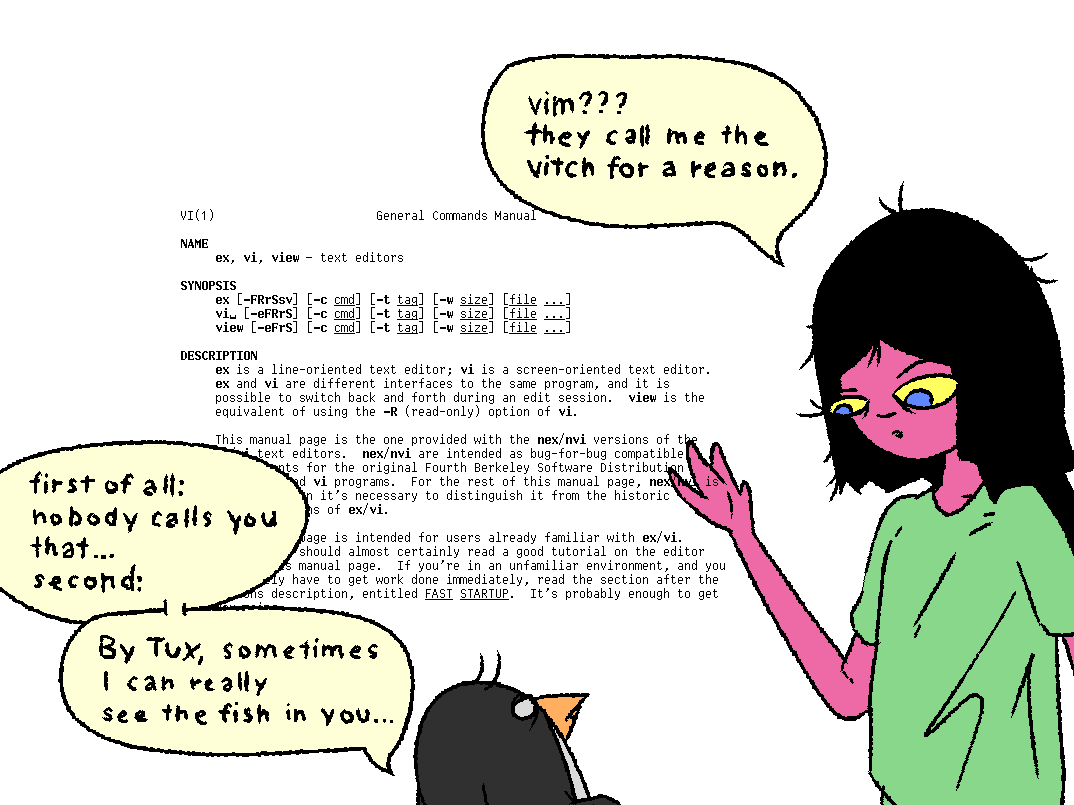vi users when they see multiple font sizes for the first time:
I use emacs in a terminal, like God intended, in screen or tmux.
When does pmjv do authentic vim art

authentic
Hmm.
https://github.com/chaoren/vim-imageview
img2txt
considers
$ wget https://lemmy.sdf.org/pictrs/image/e081b59e-7b48-4114-b8fa-e721dd0af371.png -O ~/tmp/technomage-vim.png $ git clone https://github.com/hit9/img2txt.git $ cd img2txt $ python3 -m venv venv $ . venv/bin/activate (venv) $ pip install img2txt.py (venv) $ ./img2txt.py --dither --targetAspect=.4 --ansi ~/tmp/technomage-vim.png
Yes, now authenticity has fully been achieved!
I can feel the fish guiding my hand when I create vim macros
~15 minutes, give or take.
Good to see girl is wearing a safety vest. That Ctrl key might break your pinky finger at any point!
I dunno. Those
vimusers get a muscular left pinky from mashing Escape like a rat on a cocaine dispenser.I’m pretty sure that a typical
emacsuser has more chorded Control-key presses than a typicalvimuser does Escape key presses.But I’m not at all sure that that’s true of actually toggling the respective keys up and down, and if you figure that that’s most of the physical work… Like, if I hit
C-x C-sand thenC-x C-fin emacs, I’m not actually releasing the Control key between the four chorded keypresses. Avimuser is gonna maybe smack Escape to go from insert to system mode, then do their:w|eor whatever. That’d be the same number of Escape and Control keypresses.EDIT: Normal mode, not system mode.
If you’re using your pinkie you’re doing it wrong…
https://www.gnu.org/software/emacs/manual/html_node/sasl/Steps.html
3.3 Steps
A step (
sasl-stepobject) is an abstraction of authentication “step” which holds the response value and the next entry point for the authentication process (the latter is not accessible).Looks like it’s for if you’re using an emacs IRC client or mail client or XMPP client, to do part of the authentication.
don’t speak too loud otherwise they’ll C-x C-f you
Love it!






